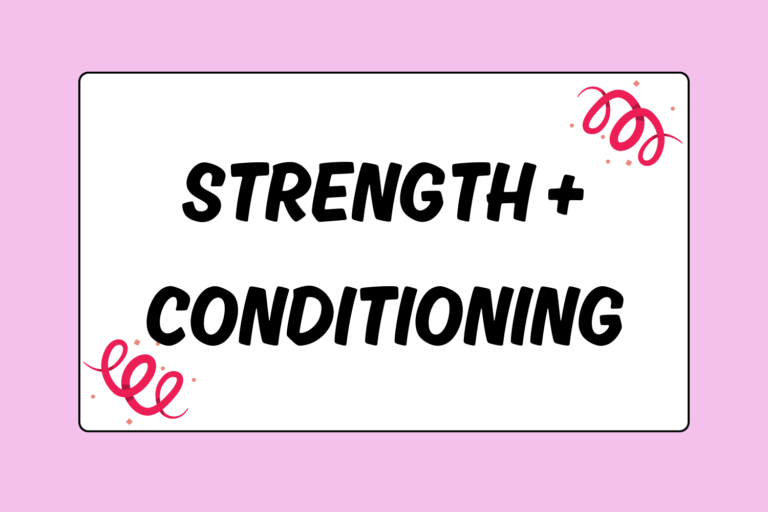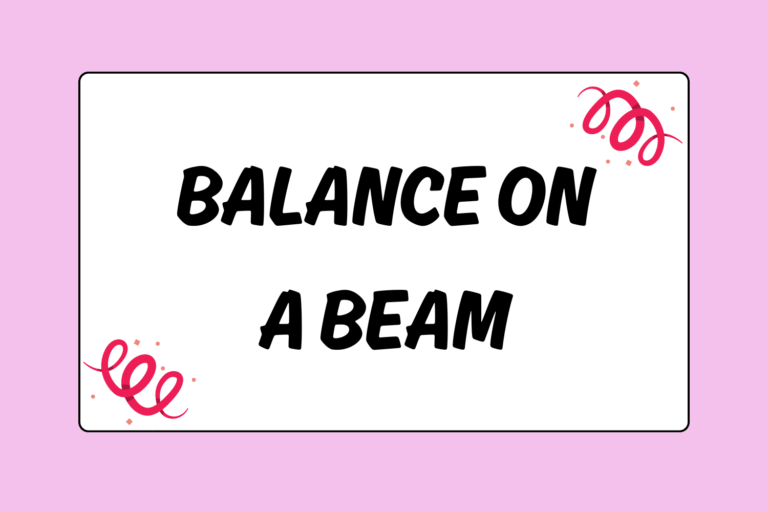A kip is an intermediate skill done on the uneven parallel bars in women’s artistic gymnastics. It is also performed in men’s artistic gymnastics on the high bar and parallel bars, but for the purposes of this guide, we will focus on women’s uneven parallel bars.
In women’s gymnastics, the kip is a required element for a level five gymnast and above. It often serves as a stumbling block for level four athletes as it is difficult to master. The skill will take even the most qualified gymnasts several weeks to accomplish—maybe even several months—but it is an essential component to a successful bar routine.
Explanation of the Kip
The kip serves two specific purposes on the uneven parallel bars: It is the way a gymnast gets from the bottom to the top of the bar (the high or the low) with her hips resting on the apparatus; and it is often the way a gymnast will mount the bars. The kip provides the gymnasts with the proper positioning to then perform skills such as hip circles and release moves. It is a critical component to making a bar routine flow smoothly from one skill to the next.
The three main components in the kip are the swing, the pike-up and the pull-up onto the bar. Here is a step by step progression of the skill:
- Glide swing: Stand about a foot from the apparatus and jump from the ground to the low bar, grabbing the bar with your hands. Let your body glide smoothly in either a pike or straddle position away from the bar.
- Pike-up: At the peak of the glide, make sure your body is flat with your legs together and stomach in a scooped position. As your body starts to naturally swing back towards the bar, lift your feet back up towards the apparatus in a pike position. The goal is to bring the tip of the toes up to the bar.
- Pull-up: After the pike-up, immediately pull your body up onto the bar with arms straight, using the natural motion of the body swing. The kip is completed in this position: your hips resting on the bar, your arms straight and your head looking forward.
Hot Tip: Feet Position
One mistake gymnasts often make during the kip is to position their feet too high off the ground at the beginning of the glide. If you keep your legs and feet closer to the ground at the beginning of the glide, it will make the kip much easier to achieve.
Stomach Muscles
The stomach and core muscles are used in just about every skill a gymnast will perform—and the kip is no exception. It takes extraordinary stomach muscles to just initiate the skill and pull your body up even to the bar. This supreme physical challenge is one of the reasons the kip is so difficult to do.
To strengthen your stomach muscles, try these exercises:
Hollow Rock
This floor exercise simulates the kip motion.
- Lie flat on your back, with your arms above your head and your legs straight.
- Contract your stomach muscles, so that the hollow of your back is flat to the floor.
- Lift your legs, head, and arms six inches off the ground.
- With your head looking toward your feet, gently rock back and forth, without letting your head, arms or legs touch the ground.
Hanging Pike Holds
This bar exercise strengthens your lower core and helps you perform the pike-up.
- Hang from a bar with your feet dangling.
- Raise your legs in a pike position to the bar and hold the position for 10 seconds.
- Slowly, in increments of 10, lower your legs back to the starting position. It is important to control the motion the entire time and not to let your legs swing on the bottom.
- Do five sets if possible – your abs should burn!
Arm Exercises
The arms also need to be incredibly strong to successfully complete the kip. There are several ways to strengthen your arms, including pull-ups, push-ups and dips. These common exercises will build power and endurance, and are easy to perform at home or in the gym.
Complete 5 to 10 sets of each at least three times a week. The repetition of these drills will help develop lean muscles—a factor that will significantly improve the success of the kip.
It Takes a Coach
But performing a kip takes more than strong muscles. It takes a qualified coach who is willing to spot and train you throughout the entire skill. They must guide you, through trial and error, until you get the proper feel of the motion.
Coaches can also offer hints and tricks on the proper way to glide and pull up into position.
Hot Tip: Rope Trapeze
One tool often used to help gymnasts with the kip is the rope trapeze. The rope trapeze is a rope that hangs from the lower bar in a “U” shaped position. Gymnasts place their feet into the middle of the “U” (often padded with a towel or cushion) and with their hands on the bar, perform the glide motion. The trapeze will help the gymnast learn the proper technique and timing of the glide as well as the proper alignment of the legs.
Valued Skill
Remember that the kip is not an easy skill. It is not a natural motion for the body and will take weeks, or months, of work to master. But if you train with a qualified coach and dedicate yourself to developing strong arm and core muscles, the kip will soon be one of your most valued skills on the uneven parallel bars.





